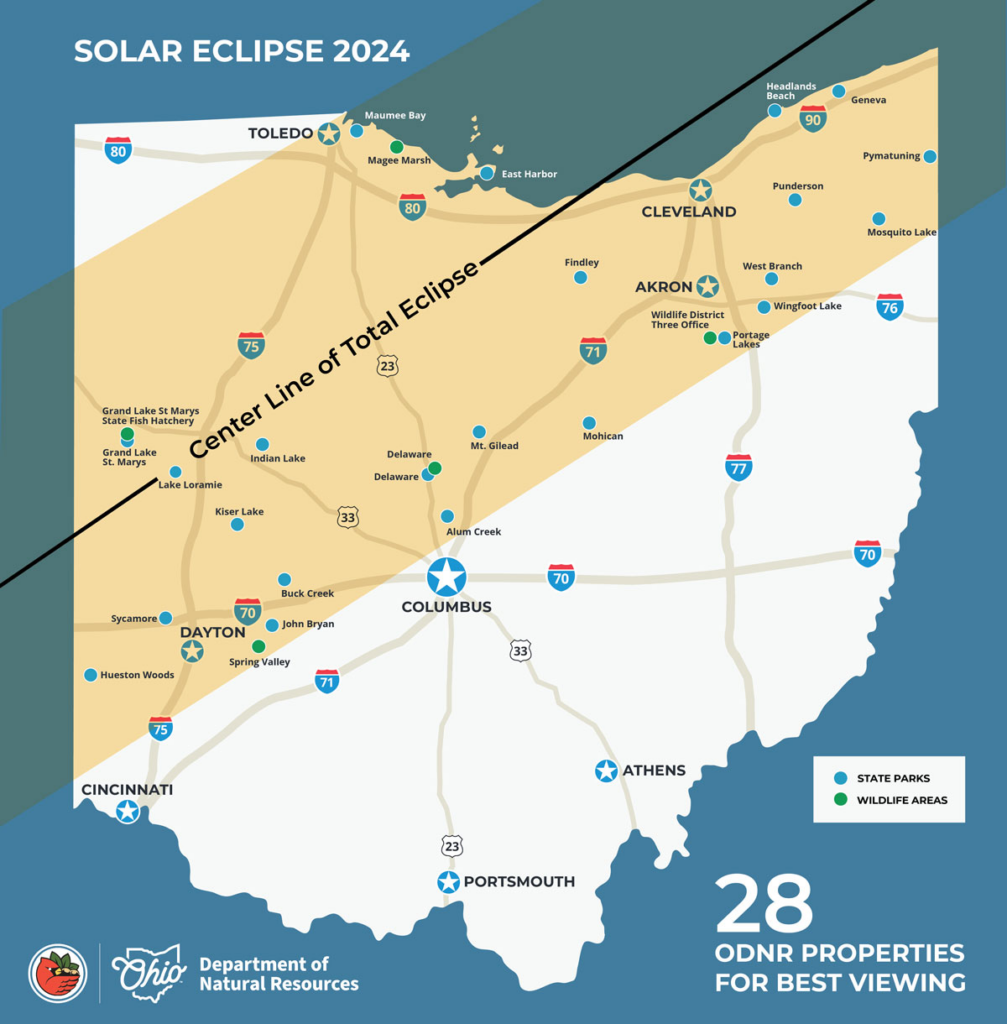
Don’t Miss This Rare Solar Event
On Monday, April 8, 2024, people within a 124-mile-wide band across Ohio will experience a total solar eclipse.
A total solar eclipse is rare and spectacular. While they occur somewhere on the Earth once every 1.5 years, only 21 total solar eclipses have crossed the lower 48 states in the history of the United States.
The last total solar eclipse visible in Ohio was in 1806. The next total solar eclipse in Ohio will be in the year 2099.
Areas in Ohio including the Fred Bay Observatory at Hisey Park in Warren County are outside the path of totality but will experience a partial eclipse.
However, if you want to experience total darkness from 2 to 4 minutes in the middle of the afternoon, you’ll want to drive to a location within the path of totality.

Source: Ohio Department of Natural Resources >
Eclipse Facts
- After April 8, 2024, the next total solar eclipse that can be seen from the contiguous United States will be on Aug. 23, 2044.
- We can’t normally see the corona – the Sun’s outer atmosphere – because the Sun’s surface below it is so much brighter. But during a total solar eclipse, the corona becomes visible, offering unique opportunities to study it.
- When the Moon completely blocks the visible surface of the Sun during a total solar eclipse, viewers can remove their eclipse glasses. A total solar eclipse is the only type of solar eclipse where eclipse glasses can be momentarily removed.
- When a solar eclipse reaches totality, nocturnal wildlife sometimes wakes up, thinking that it’s nighttime, and non-nocturnal wildlife might think it’s time to head to sleep!
- Source: Ohio Emergency Management Agency >
